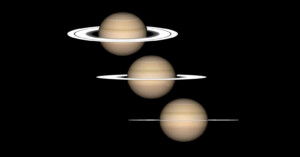
Saturn’s Rings Are Disappearing: Photograph Them While You Can
Astrophotographers are going to want to photograph Saturn's rings sooner rather than later since they're going to disappear in more ways than one after this summer.

Astrophotographers are going to want to photograph Saturn's rings sooner rather than later since they're going to disappear in more ways than one after this summer.
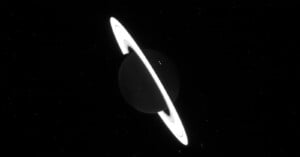
The James Webb Space Telescope (JWST) has captured its first, raw images of Saturn that show the planet's famous rings in stunning, new detail.
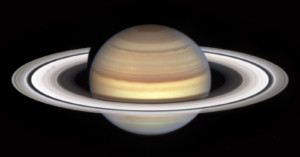
New photos from Hubble show what scientists call "spokes" across Saturn's rings. First seen by NASA's Voyager in the 1980s, these spokes appear seasonally and scientists still can't fully explain them.
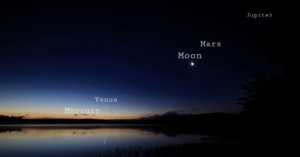
The last few days have seen a parade of planets lined up in the night sky with Mercury, Venus, Saturn, Mars, Jupiter, and the moon all visible -- a planetary alignment that won't happen again until 2040.
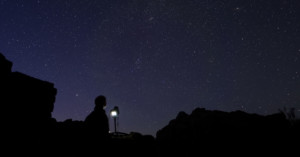
Starting in April, the northern hemisphere will be treated to an alignment of up to five planets and the moon, all visible together. Planetary alignments, especially at this scale, aren't common and could prove to be an excellent photo opportunity.
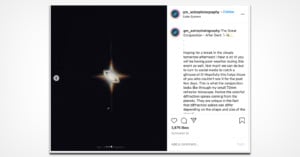
During the peak of the astronomical event that was the conjunction of Jupiter and Saturn in December, a photographer named Garret who goes by gm_astrphotography posted a photo that sparked some debate to its authenticity. The fact is, the image is 100% legitimate.
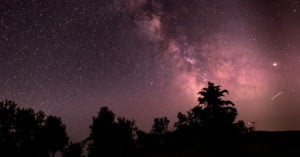
With several astrolnomical events coinciding with the Winter Solstice, including the Jupiter-Saturn Conjunction and the Ursids Meteor Shower, December 21st is poised to be a prime opportunity for practicing nighttime and astrophotography skills.
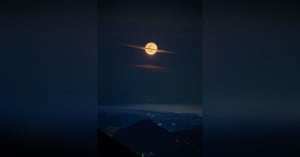
Photographer Francisco Sojuel was climbing a volcano when he spotted the moon "dressed up" like Saturn. A thin cloud passing across the front of the Moon made it look like it had rings.
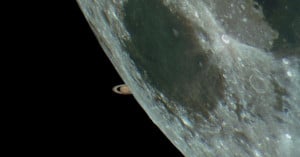
Want an astrophotography challenge that doesn't come around very often? Try photographing Saturn peeking out from behind the Moon.
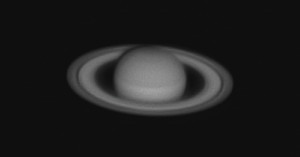
Did you know that you can capture clearer photos of planets by using a red filter? Photographer Andrew McCarthy captured this view of Saturn from his backyard in Sacramento by doing just that.
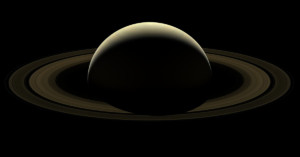
On September 15, 2017, NASA's Cassini space probe plunged into Saturn's atmosphere and burned up, concluding its mission after 13 years in orbit. Two days earlier, Cassini used its wide-angle cameras and captured this beautiful final photo of the planet it had studied for over a decade.
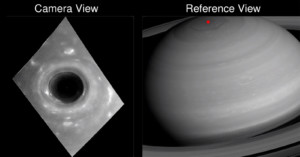
On April 26th, NASA's Cassini spacecraft made its first-ever "Grand Finale" dive through the gap between Saturn and the planet's rings. As it shot around the gas giant, Cassini snapped a lengthy series of closest-ever photos showing the features of the atmosphere. Now NASA has combined those photos into a beautiful fly-by movie.
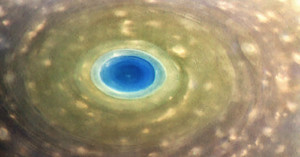
On April 26th, NASA's Cassini spacecraft took its long-awaited first dive in between Saturn's rings, bringing it closer to the planet than ever before. And if you were on the spacecraft looking at Saturn's north pole with your own eyes as it flew by, this is what you would have seen.
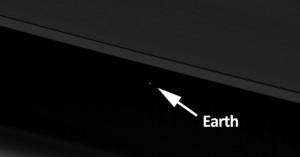
NASA just published this remarkable photo captured by its Cassini spacecraft on April 12th, 2017. Shot from 870 million miles (1.4 billion kilometers) away, it shows Earth as a bright dot framed by Saturn's icy rings.
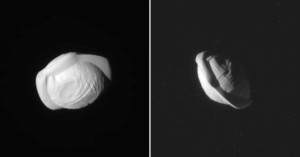
NASA has just released new raw photos of Saturn's tiny moon Pan, captured on March 7th, 2017, by the Cassini space probe from about 15,000 miles away (~24,500km). The photos reveal a bizarre-looking moon -- one that looks like a giant ravioli floating in space (or a dumpling or walnut or "paper mache mini-planet").
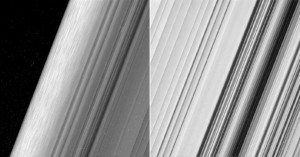
NASA just released the highest resolution photographs of Saturn's rings yet. About 1.2 billion kilometers )(746 million miles) away from Earth, NASA's Cassini spacecraft is busy capturing a beautiful piece of our solar system in never-before-seen detail.
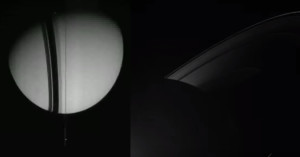
Back in July, we shared an eye-popping roundup of some of the best space photos captured by …
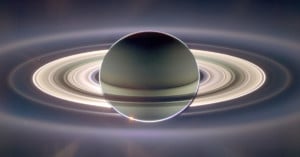
NASA's New Horizons probe dazzled the world with a detailed photo of Pluto today, but another probe has been beaming back stunning shots of space for over a decade already. The Cassini space probe has captured its fair share of eye-popping photos since launching in 1997 and arriving in Saturn's orbit in 2004.
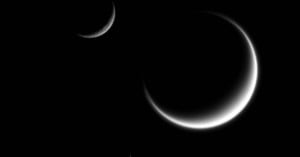
Saturn has 62 known moons, and NASA recently captured three of the more prominent ones together in the same …
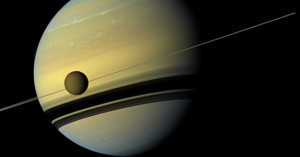
Ten years ago, on January 14, 2005, NASA landed its Huygens probe onto the surface of Saturn's largest moon, Titan. To commemorate the event, NASA released the above video that takes us on a 1,000,000,000x journey from a zoomed out photo of Saturn and the moon and into the closest photos captured by Huygens.
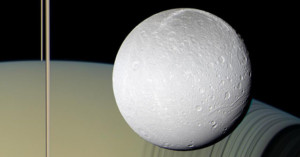
The image above may seem like some kind of artist rendering, but it's an actual true color photograph showing Saturn, its rings, and one of its moons. Click here for a full-resolution version of the photo.
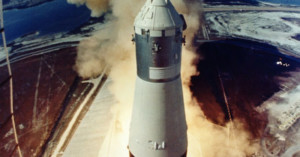
It was 45 years ago, yesterday, astronauts Neil Armstrong, Buzz Aldrin and Michael Collins took on what is without a doubt one of the most important endeavors in the history of humankind. Packed together into one of the most incredible pieces of engineering to ever exist, the astronauts of Apollo 11 left Earth’s atmosphere, with hopes of being the first humans to ever step foot on the Moon.
To commemorate the accomplishment many thought was impossible – and to those who still do – we have put together a chronological collection of photos documenting the entire journey. Shared by NASA as part of their Project Apollo Archive, these images are just a few from the vast archive of medium format, 35mm, and 16mm frames captured throughout the Apollo missions.
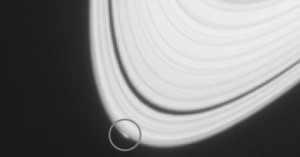
In what is a rare and rather historical event, NASA's Cassini spacecraft has captured a fuzzy image of what scientists believe is a new moon forming from the particle rings surrounding the planet.
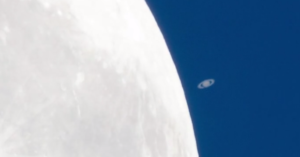
The time-lapse above by photographer Colin Legg does a great job of showing off the power of Magic Lantern RAW video while capturing a cool astronomical phenomenon at the same time.
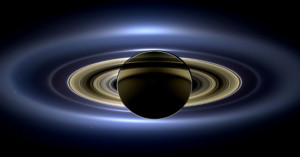
Yesterday, NASA released a real treat for all the space photography lovers out there: a gorgeous, incredibly detailed photo mosaic of Saturn that also captured Venus, Mars and Earth (with everybody on Earth waving at the camera at that exact moment... not that you can see any them).
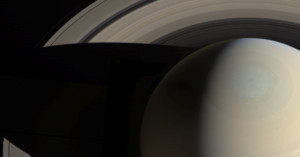
The NASA spacecraft Cassini has sent back some incredible imagery of the planet Saturn over the years, much of which is being put to use to create an IMAX movie. But thanks to the work of a Croatian software developer, we now have a full, breath-taking, high-resolution photo mosaic of Saturn in all its glory as it looked on October 10th.
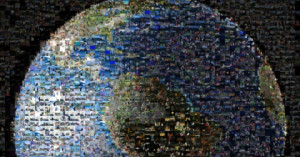
On July 19th, the Cassini spacecraft that has been hovering around Saturn -- and sending back some stunning images we might add -- turned around to take a picture of its home planet as part of a larger mosaic of the Saturn system.
In honor of this occasion, NASA asked people to send in photos of them waving at Cassini as it took their picture from roughly 808 Million miles away (give or take). Over 1,400 photos were submitted, and have been combined into a beautiful collage of Earth.
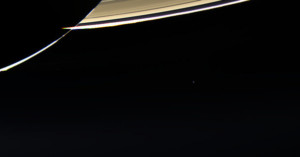
Were you smiling a lot Friday afternoon? Hope so, because that's when you and your 7 billion planetary neighbors got a rare portrait session from the Cassini spacecraft. Orbiting above Saturn almost a billion miles away, the craft turned its camera towards to Earth to capture some spectacular images of our planet foregrounded by Saturn's rings.
It was the first time in nine years that Cassini has been in orbit and taking scheduled photos of our planet, prompting NASA and friends to promote a "The Day That the Earth Smiled" event via social media.
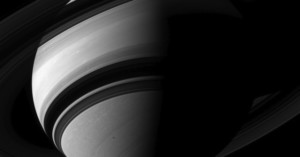
The tagline for the 2014 IMAX movie In Saturn's Rings simply states: "This is Real." And it's a tagline that bears repeating to yourself over and over again as you watch the preview footage above.
A fly-through put together from over one million real photographs -- many taken by NASA’s Cassini spacecraft -- the movie promises to contain zero CGI. And above, we have the first teaser for the film, available in 4K as long as your monitor can handle it.
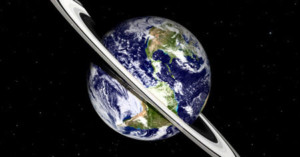
Last month we shared some photo illustrations by science artist Ron Miller that showed what the night sky would look like if other planets in our solar system replaced the moon. Now Miller is back again with an equally interesting concept: what would landscape photos look like if Earth had a ring like Saturn's?